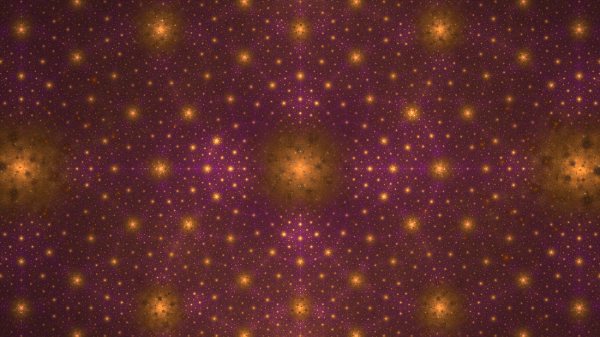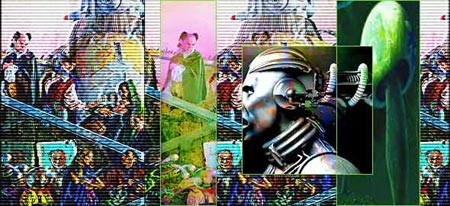BY LETTER
Cybercosm, The
Technology > Application > Communications
Technology > Technology Levels > High Tech / Hitech
Technology > Application > Infrastructure
Technology > Application > Software
Technology > Technology Levels > Transapientech / Godtech / Clarketech
Sophonts > Modosophonts > Virtual
Technology > Technology Type or Material > Virtual/Infotech
Technology > Technology Levels > High Tech / Hitech
Technology > Application > Infrastructure
Technology > Application > Software
Technology > Technology Levels > Transapientech / Godtech / Clarketech
Sophonts > Modosophonts > Virtual
Technology > Technology Type or Material > Virtual/Infotech
 Image from Avengium |
A Universe of Universes.
That's the only way I can describe it.
Within a hour of me there are more virches than stars in the galaxy,
Trillions of worlds with millions of inhabitants.
Gazing at the network I run slow;
golden threads connecting brilliant pearls,
nebula of colour denoting dominant physical models,
Waves of data like music of the spheres.
The Universe is a wasteland for life,
The Cybercosm has filled it.
Excerpt from Tyrol's Travel Notes: Interviewing Uploads
A cybercosm is defined as a network of virches with a significant level of social interaction, often sharing the same physical infrastructure. The network of virches operating throughout the Nexus and Lightway is often referred to simply as the Cybercosm (capitalised), or occasionally "The Greater Cybercosm" when differentiating from ahuman or xeno networks.
The exact extent of the Cybercosm is impossible to determine for certain. There is a constant eb and flow as new virches are spawned, stored, deleted, closed off or opened up. The prevalence of fast running virches complicates this process further as their denizens spawn and delete new environments at an elevated rate. It is estimated that the Cybercosm of the Current Era contains 10^20 virtual universes with some 10^6 using a fundamental physics models comparable to the Ril. The rest fill a spectrum of increasingly alien and baroque models, from simple alterations of physical constants through different dimensional numbers to abstract mathematical environments human-like mindtypes cannot grasp. It is thought that the cybercosm of the Solipsist Panvirtuality dwarfs that of the Greater Cybercosm by many orders of magnitude. However as very few of the Panvirtuality worlds allow outsiders to enter almost nothing is known about it for certain.
Within virches speaking in terms of geographic position with other virches is often meaningless as it is impossible to point in any direction within one and be pointing at another. In this respect a cybercosm can be thought of as a multiverse with many orthogonal universes' that inhabitants can travel between. However the physical infrastructure to run virches creates a pseudo-geography due to latency. Thus maps of any cybercosm appear as networks with virches as nodes and connections varying in length representing the latency between them. For virches running on the same processor these connections are very short, often negligible, whereas processors separated across space (such as within an orbital band, Matrioshka or the Nexus as a whole) are significantly larger. Cybercosm maps are also dependent on a particular point of view. Viewing such a map in a fast running virch will result in the connections appearing larger as subjectively the latency is more pronounced. This effect is mitigated or exacerbated depending on the clock rate of the other virches with latency being shorter to virches with comparable or faster clock rates and longer with those that are slower (as it takes the internal mechanisms and citizens of said virches longer to reply). Virches running slower experience relatively less latency and can sustain meaningful relationships with more distant virches in the network (even those on the other side of the nexus). For this reason it is quite common to find chains of relationships between fast and slow running virches in close proximity and slow virches across greater separation.
Some of the oldest Inner Sphere virches (grouped together by their ancient name "The Realities") have been in continuous operation for over 9000 years according to the coordinated Nexus calendar. Internally the subjective history of these virches ranges from two-to-four orders of magnitude larger. The gulf in timescale as well as accumulated differences in physical models make older, faster running virches increasingly difficult to communicate with from a Ril perspective. This has led some to wonder just how many terragens there are in the cybercosms that disregard, or even are unaware of, the vast physical civilisation surrounding them.
 Image from Bernd Helfert |
Related Articles
- Bottleworlds
- Comparative Chronology
- Cybercosm - Text by M. Alan Kazlev
Generic term for any virchworld in or apart from the Known Net; a subdivision of the Cybercosm. - Orion's Arms
- Virchbuilder Packages
- Virchspace - Text by M. Alan Kazlev
Any digital space or environment; pertaining to virch or a cybercosm. - Virchuniverse - Text by M. Alan Kazlev
Generally, an aggregation or collection of thousands of interconnected virchworlds or cybercosms, all sharing the same basic ontology and lay-out, to make traveling from one to the other easier. Sometimes also used to designate a single extremely large virchworld. - Virchworld
- Virtual Gardens
- Virtual Haven
- Virtual Labyrinths
- VR
Appears in Topics
| Communications | High Tech / Hitech | Infrastructure |
| Software | Transapientech / Godtech / Clarketech | Virtual |
| Virtual/Infotech |
Development Notes
Text by Todd Drashner
Updated by Ryan B (2018)
Initially published on 31 December 2007.
Updated by Ryan B (2018)
Initially published on 31 December 2007.






